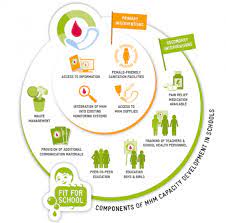-
Best Australian Pokies Best Payout
Play Free 777 Pokies Online
What Are the Best Australian Pokies to Win Big On
What Are the Best Online Pokies with Low Minimum Deposits for Real Money in Australia
New Australian Pokies Accepting PayID
What Are the Best Strategies to Win in Online Pokies with Bonus Rounds in Australia
Tips for Winning Top Australian Pokies
What Online Casinos Offer Free Play Pokies with Welcome Bonuses in Australia
Australian Slot Games
Payout Ratio Pokies with Welcome Bonus

Feminine products should be accessible at schools- How did these issues come about? What do these issues reveal about our community? Our society? Our culture? Our country?
Feminine products should be accessible at schools_How did these issues come about?
For this essay, you are encouraged to use different types of sources of evidence from text and media, including sources such as online interviews, films, podcasts, or even YouTube videos. A text source, however, is required.
Text sources include academic or scholarly sources, such as research articles, studies, peer-reviewed articles, textbooks, etc.
There is no prompt for this essay; it is up to you to choose a topic and create the specific focus of your essay.
However, the general topic of your essay should tackle issues you may notice going on in your community or at the national level. Your topic and focus must also be timely (culturally, socially, or politically), and must address possible underlying causes. In other words, connect your topic and focus to the bigger “picture.”
Questions to help you figure out what the bigger “picture” might be:
1. Are the issues you’ve chosen to address in your essay a symptom or effect of some larger issue?
2. How did these issues come about?
3. What do these issues reveal about our community? Our society? Our culture? Our country?
The case for free tampons and pads in schools
At age 9, Mahoro Amani got their period for the first time. At home, their mother talked openly about everything they needed to know. But, their mom told them, never mention this at school.
“I was told to basically keep it a secret,” says Amani, who’s now 15 and a 10th grader at Miami Arts Charter High School, in Florida. The school, they say, doesn’t teach students about periods or supply menstrual products to students in restrooms.
“It was really concerning to me how many kids have had panic attacks or cried in the bathroom because they don’t have pads and none of their friends have pads on them,” Amani said.

LA Johnson/NPR
Amani is the president of the school’s student council, and they’re working with others on the council to get free menstrual products in the school’s restrooms. However, administrators have told them there are no plans to use school funds to do so.
Florida is one of many states that do not require schools to provide menstrual products, and a growing number of organizations, activists and students like Amani are trying to change that.
Dozens of states are considering laws related to period equity
This year, bills related to period equity have been introduced in 37 states, according to Women’s Voices For The Earth, a nonprofit advocacy group. But as of this fall, only five states require schools to provide menstrual products. Last month, California became the latest to do so, mandating that public schools and colleges stock free pads, tampons and other products in their restrooms.
In Michigan, the city of Ann Arbor recently passed a law to stock all public toilets with menstrual products.
In Florida, legislation that would require free products in school restrooms has been introduced twice, but has yet to pass.
Recent studies have shown that about a quarter of menstruating students struggle with access to period products, and that many teens still feel a stigma around menstruation.
“This country already expects schools to provide toilet paper and soap,” says Damaris Pereda, the national programs director of PERIOD, a nonprofit advocacy group. Why, she asks, shouldn’t students who menstruate have the same access to basic supplies? “So that if something happens, they just go to the restroom and get their things and continue to live their lives.”
Access to period products has an impact on learning loss
Currently, many schools keep menstrual products in the school nurse’s office.

LA Johnson/NPR
At those schools, “while you can get a period product, you often have to walk across the campus while you’re still bleeding through,” Pereda says. “What happens in that case is that a lot of students feel ashamed and like they’ve lost some of their dignity.”
Right now, there is little national data about teenagers’ access to menstrual products. But what little information there is suggests the lack of access is worse for poor students. The only publicly available study tracking the impact of period poverty among U.S. teenage students, which was funded by PERIOD and Thinx, found that 23 percent of students have struggled to afford period products.
Attachments
